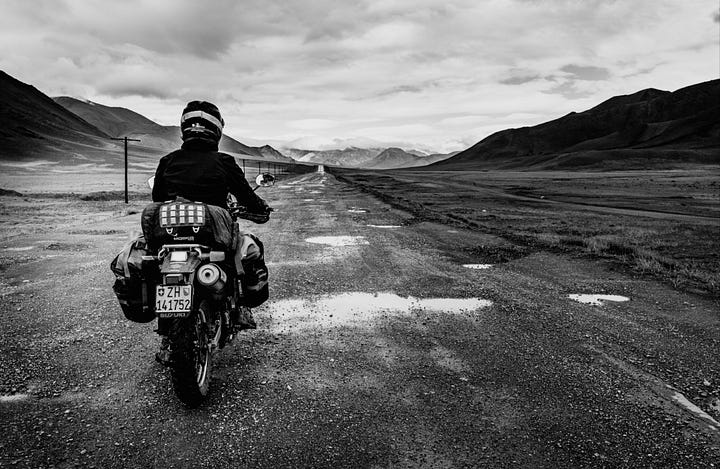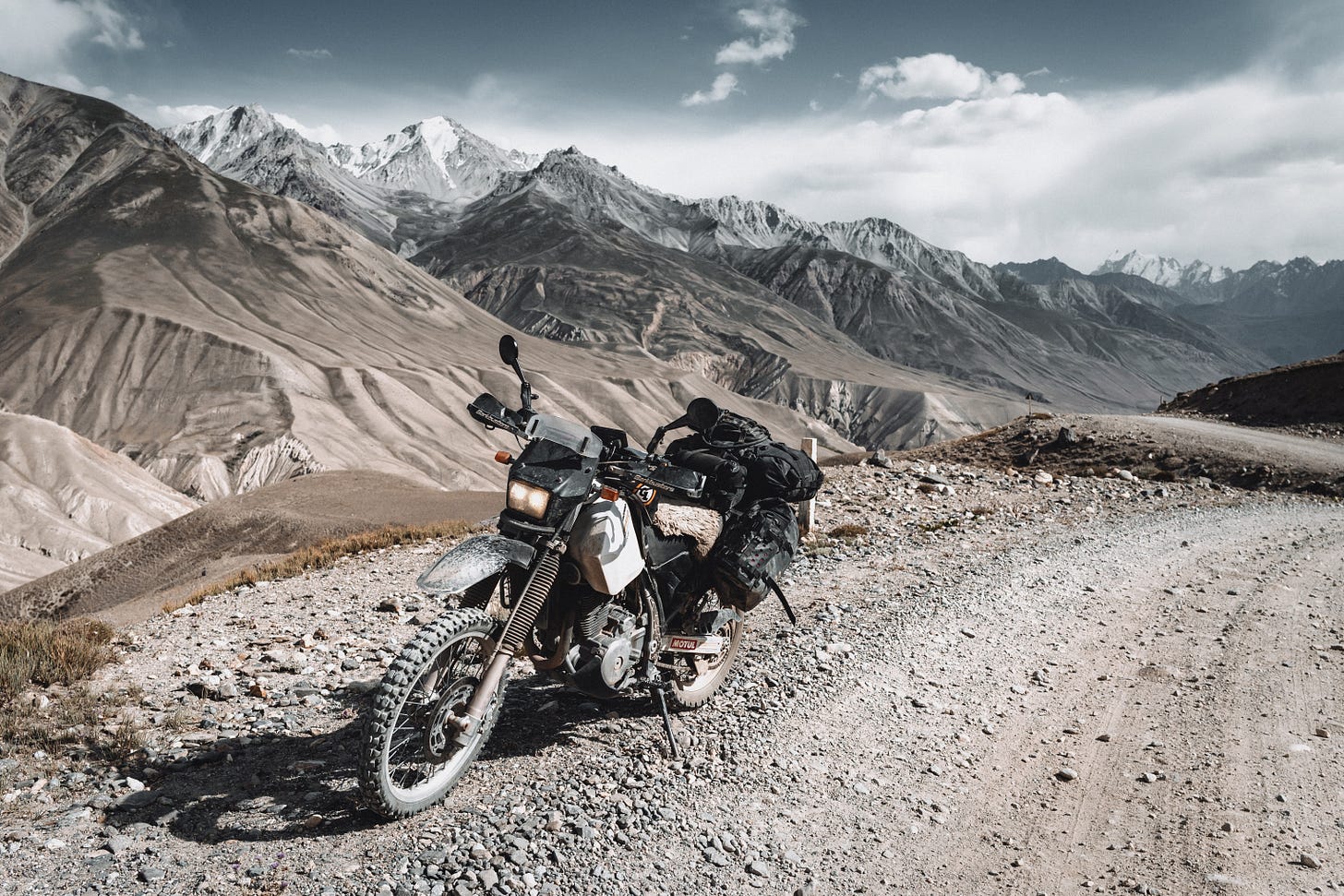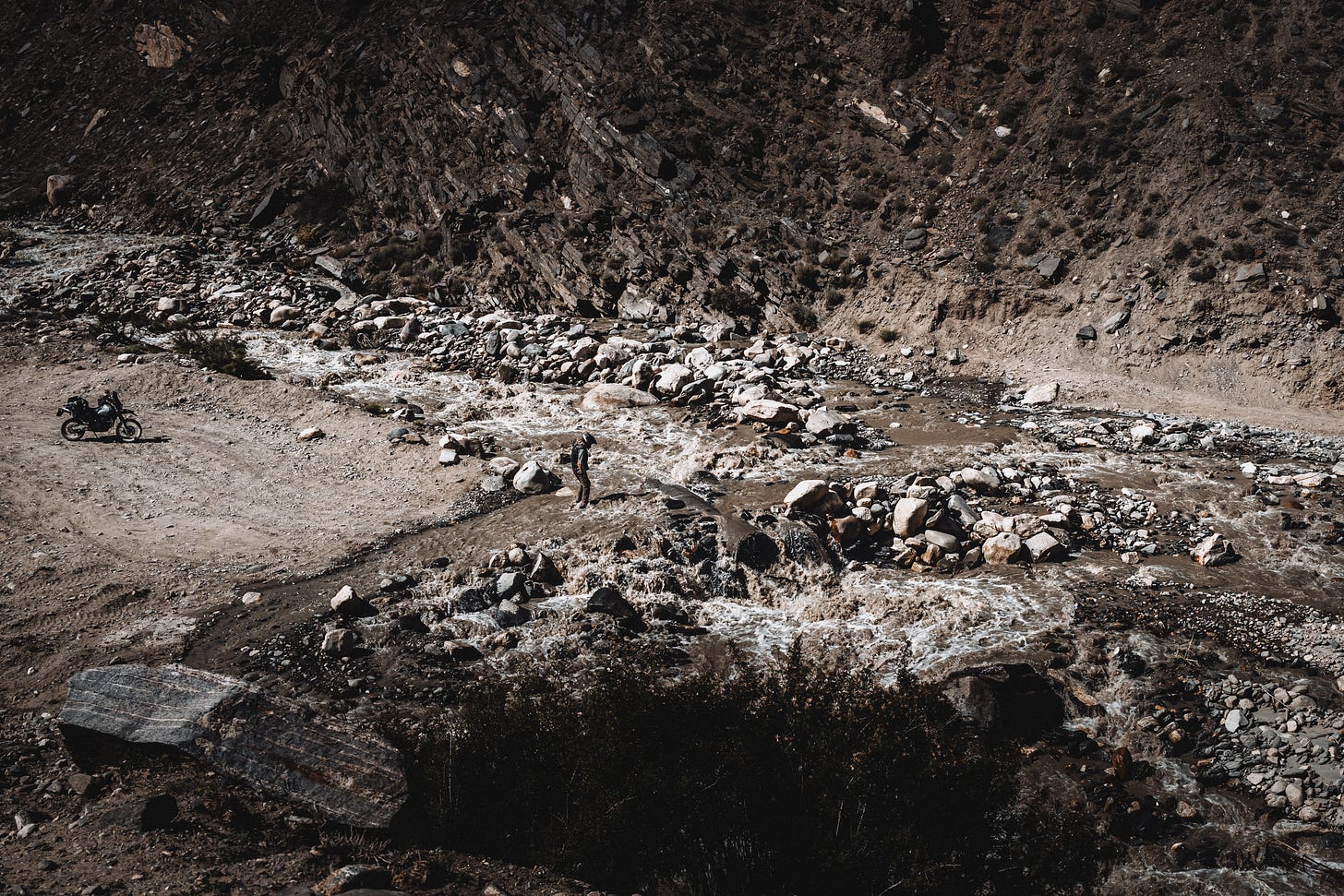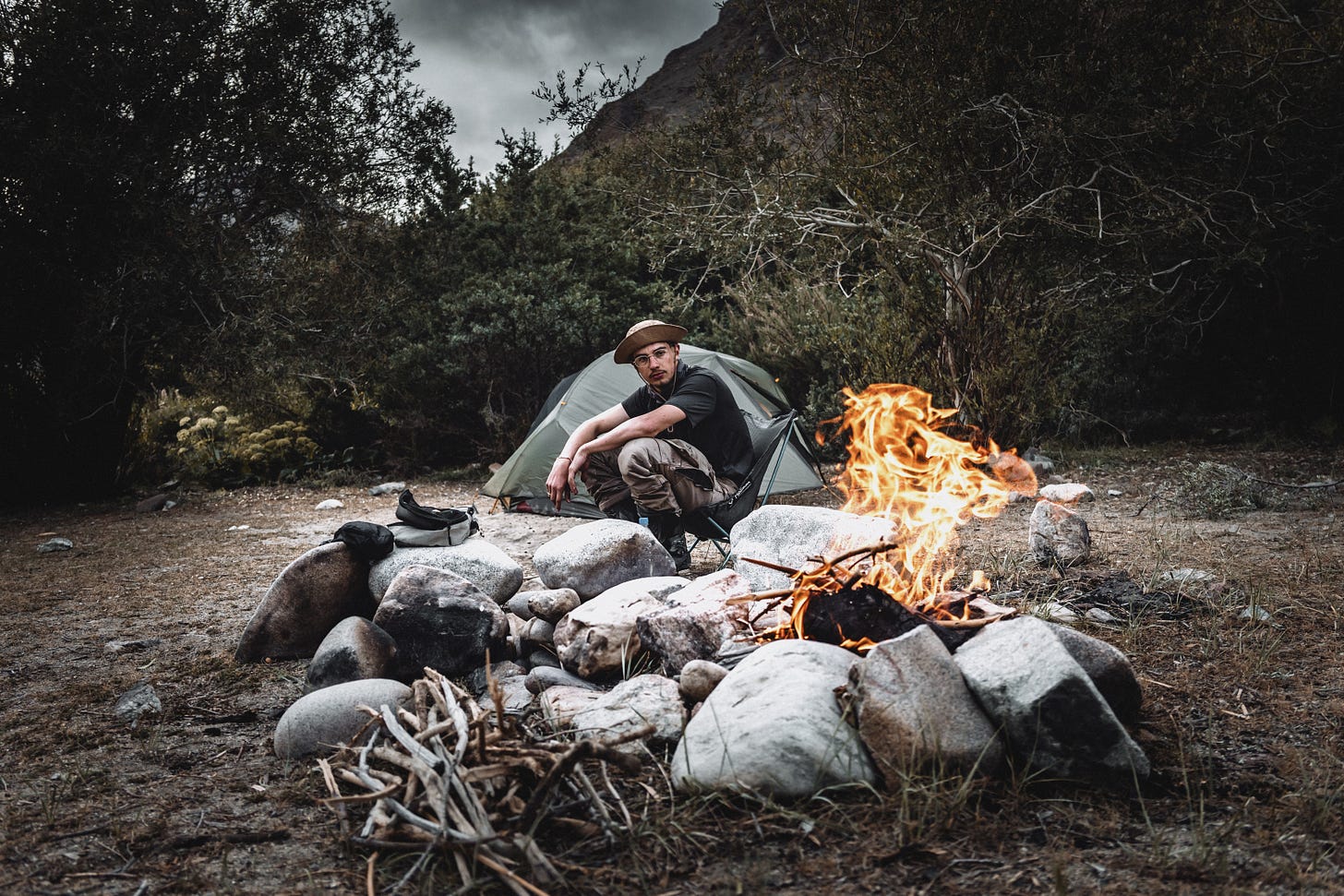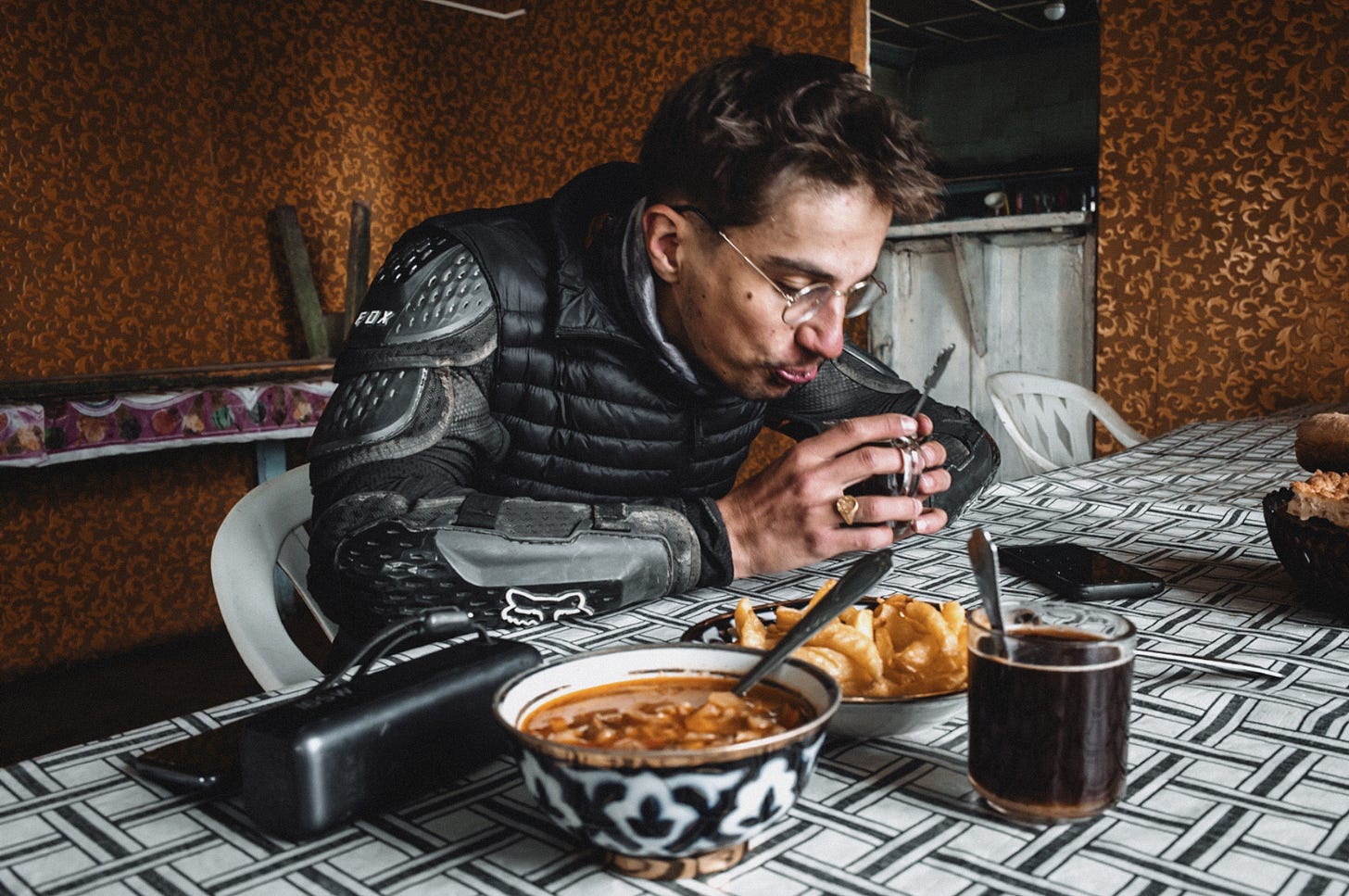Day 71 - As we departed from the lush Afghan villages in the plain, the roads became significantly rougher while heading north-east, now reaching an elevation of about 3000 meters. At Langar, the path ascends, becoming steeper and more rugged, providing breathtaking views of Koh-e Pamir, the tallest peak in the Wakhan range with 6,320 meters. The Wakhan Range is part of the Pamir Mountains and is situated in the Wakhan Corridor, Afghanistan. This range marks the southern boundary of the Pamir mountains. We continued our ascent, relishing the magnificent scenery until we arrived at our camping spot at an altitude of 3500 menters by 5 pm.
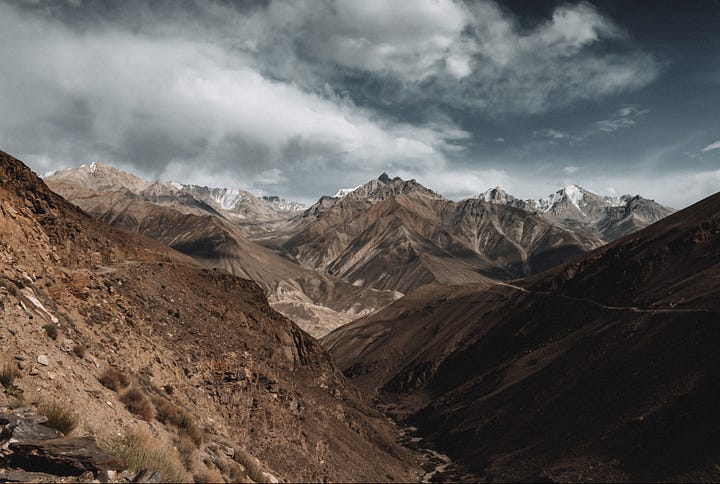
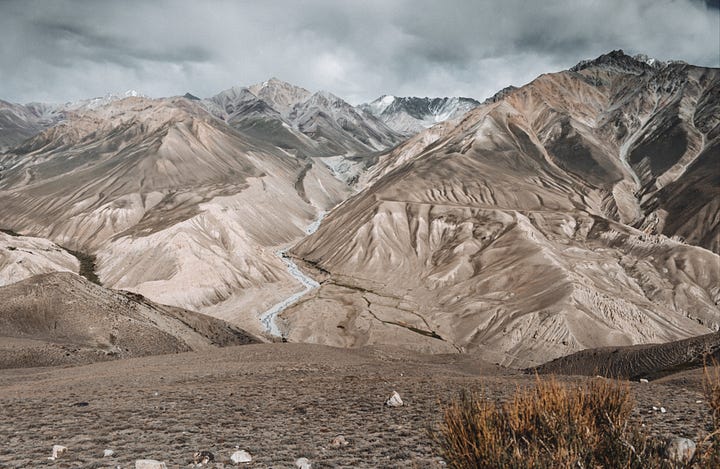
Day 71 River crossing - A tricky moment in the Wakhan valley is crossing the river just after Langar when moving east to west. It's usually recommended to cross in the morning when the river has significantly less water, but we decided to attempt the crossing at 3 pm since we wanted to avoid camping there. We reduced the weight of our bikes to make them less likely to tip over and carried most of our equipment across the river on foot. After assessing the depth and the best route, we took the plunge and successfully got both bikes across the river without any falls. Ethan and Sal, whom we had met earlier, confirmed that the river had much less water the following morning when they crossed around 9 am with their Hondas.
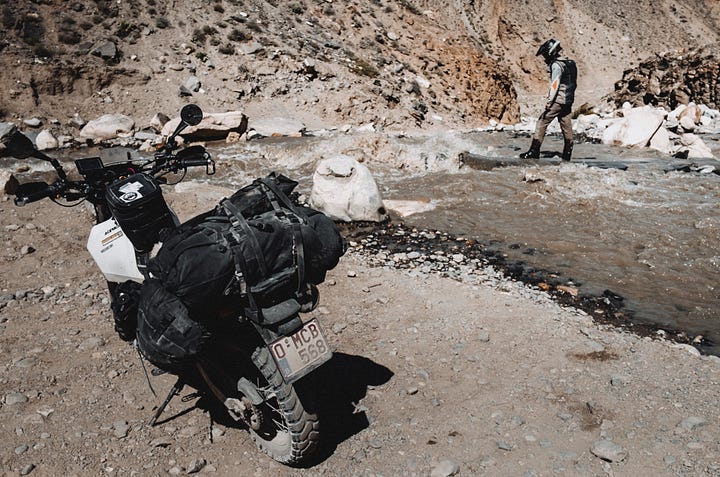
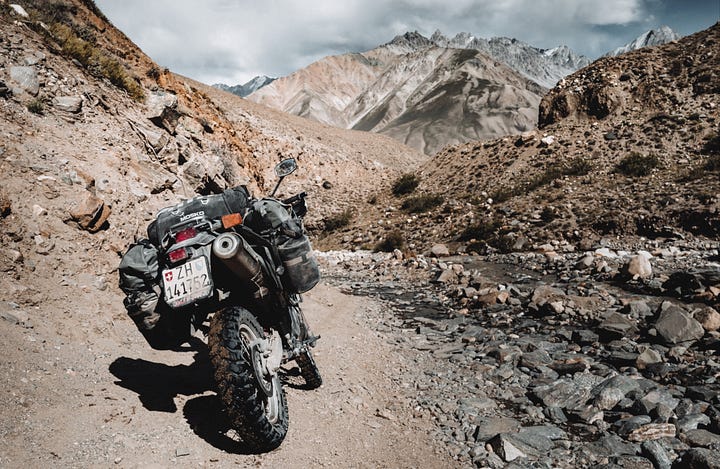
Day 71 - Camp. That evening, we pitched our camp at the base of stunning brown-reddish mountains, just a few meters from the river, with Afghanistan visible on the opposite side. With the weather being super dry over the last weeks, we managed to gather enough wood to start a campfire and prepare our classic dinner of rice with tuna, which has become a staple on our journey here in the Pamir mountains. The high altitude of the camp at 3500 meters made every movement more challenging, so we decided to turn in early at 8 pm for a long and much-needed rest.

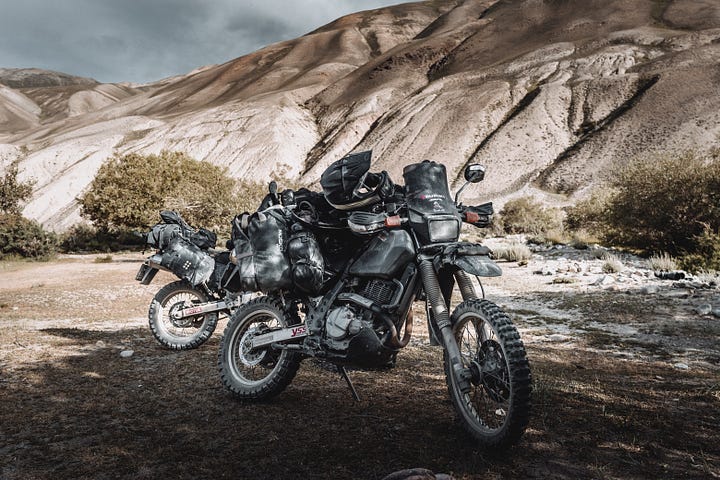
Day 72 - The gentle tapping of rain on our tents stirred us awake around 7 am, prompting us to quickly pack up before the rain intensified. We hadn’t encountered rain during our travels in Iran and Afghanistan, making this experience feel almost unfamiliar. Of course, my riding boots were still soaking wet from yesterday's river crossing and there’s nothing quite like slipping your feet into cold, damp boots first thing in the morning. A great start. To keep my feet somewhat warm at this altitude I changed my socks three times during our ride, which kind of worked. After we handed out our last passport copy to the Tadjik soldier, we passed the checkpoint to exit the Wakhan valley and leave the Hindu Kush and Afghanistan behind us. The Khargush Pass is a high mountain pass at 4319 meters above sea level connecting the Wakhan Valley with the Pamir Highway. As we descended from the sandy paths of the pass, we were met with endless kilometres of washboard tracks. The experience felt like cycling for hours over cobblestones, shaking both riders and machines to their limits. Luckily the ordeal was over an hour later, exiting the Kahrgush Valley to rejoin the Pamir Highway.
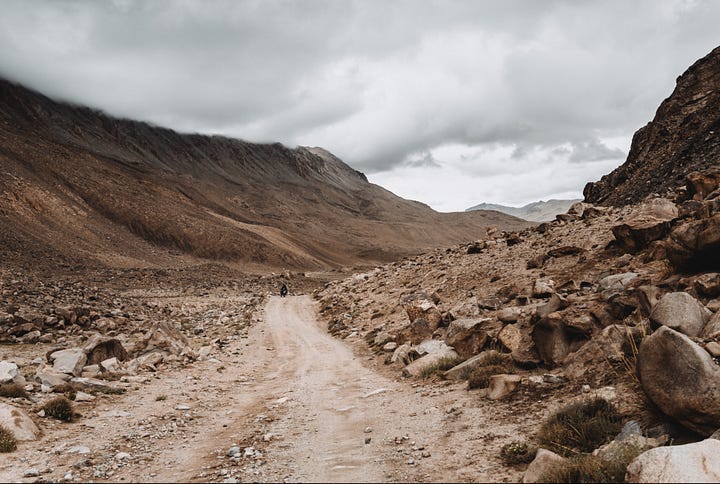

Day 72 cont. - After navigating the washboard section and enduring heavy rain, we desperately needed a break and a hot meal. We're back on the Pamir Highway, where most of the road is easily drivable tarmac here. What a relief after spending days on some of the toughest roads out here. The plateau is breathtaking, even in the rainy weather, and we took some detours off the tarmac onto dirt roads and open terrain just for fun. I felt an incredible sense of freedom as I rode towards distant peaks on this high mountain plateau covered with dirt, sand, and small bushes. Standing up on the bike and soaring towards the horizon was simply exhilarating. Eventually, the M41 guided us to Murghob, where we checked into the Guesthouse Aruf, greeted by the smile of its super friendly owner. "Lentil soup? Chicken?" Yes, please.

